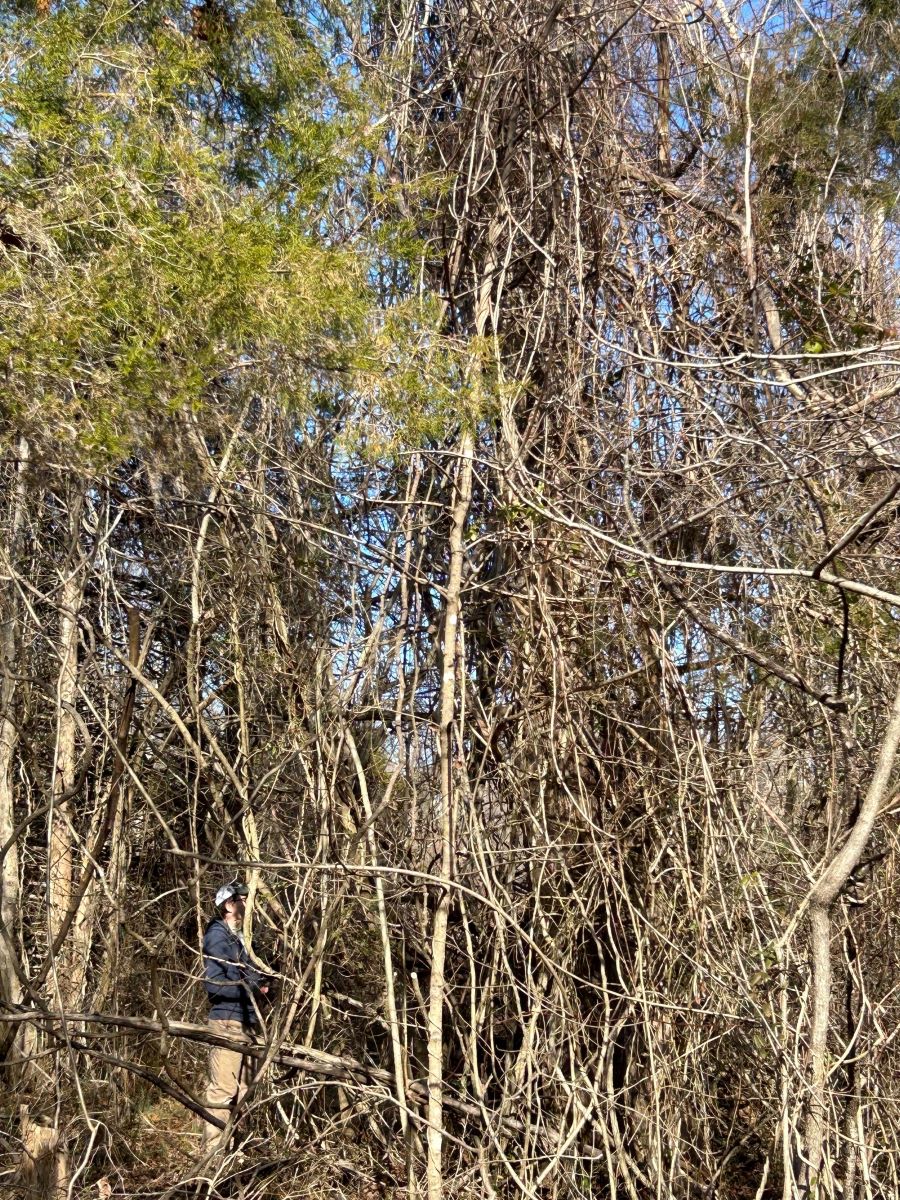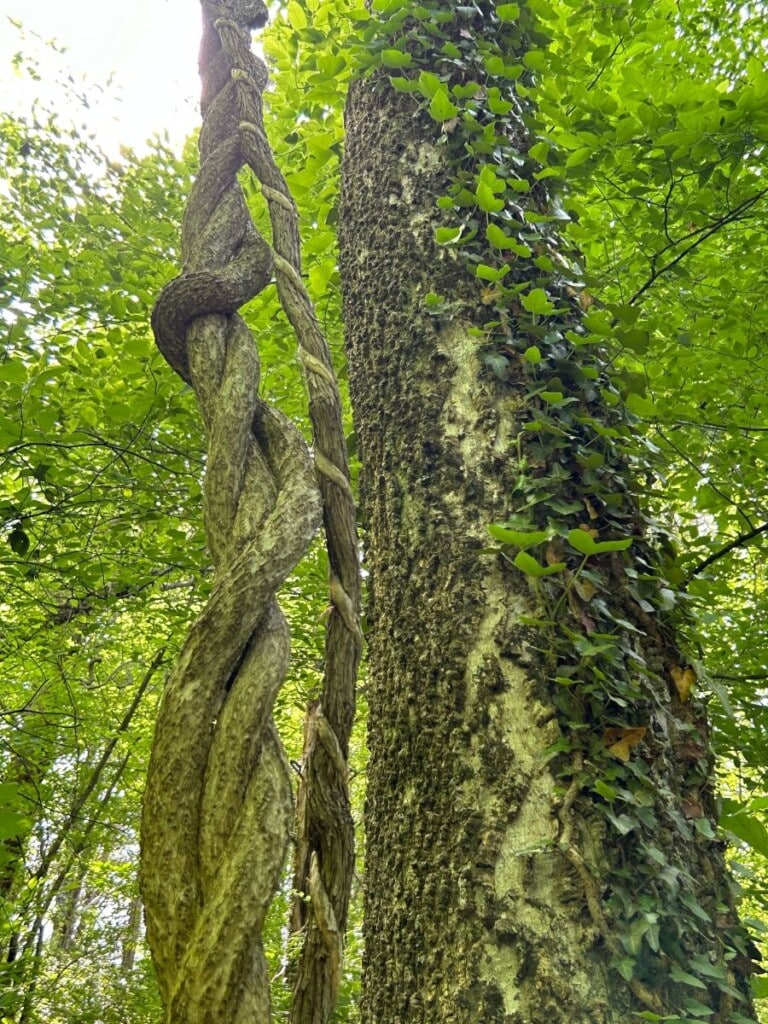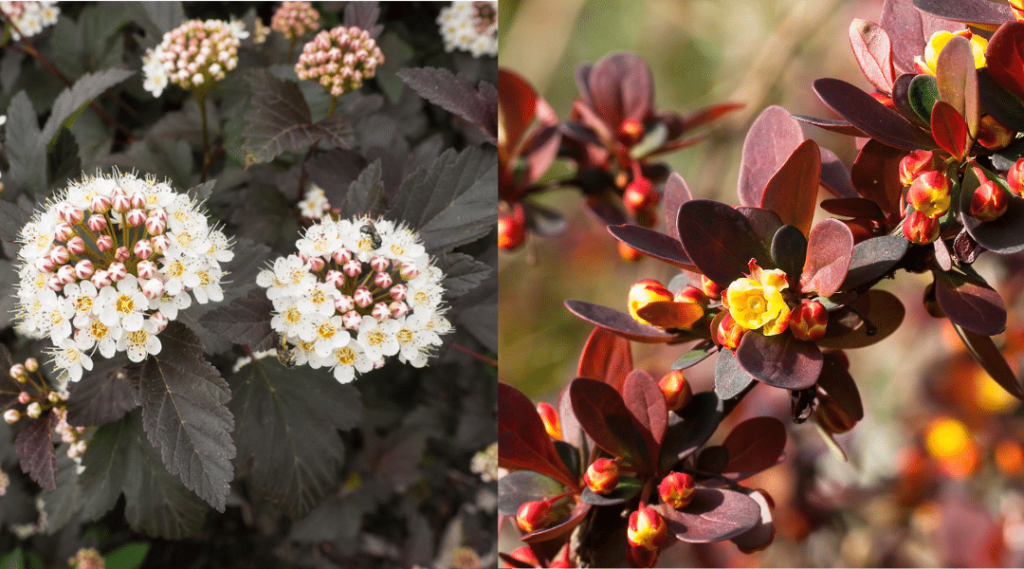Invasive plants are a growing threat to the forests and waterways in the Rivanna River watershed. To help protect these important natural resources, RCA is partnering with many other community groups to improve forest health through the Rivanna River Resilience Partnership, and is leading a grant-funded project called the Rivanna River Forest Health and Resilience Project.
Read on to find out about:
- What invasive plants are and why they are a problem
- Things you can do to help
- How to learn more and get involved
What are invasive plants and why are they a problem?
According to the Virginia Department of Conservation and Recreation, invasive plants are species that are intentionally or accidentally introduced by human activity into a region in which they did not evolve and cause harm to natural resources, economic activity or humans.
Non-native, invasive plants evolved in other parts of the world and do not have natural controls in our local environment to keep them in check. Where these plants originated, they are a part of the natural food web. The animals and insects that evolved alongside these plants help control their growth and reproduction, keeping the ecosystem in balance.

Can you spot the volunteer in this photo from Riverview Park? Can you find the sycamore tree behind the curtain of vines?
In our local environment, these plants lack natural controls and often have other characteristics that give them a competitive advantage. Native animals and insects did not evolve alongside these non-native plants and frequently will not eat them. Many of these plants also are able to reproduce and grow much more rapidly than native plants, and can quickly colonize areas where the soil is disturbed. Additionally, some of these plants release chemical compounds into the soil that interfere with native plant germination and growth. With these advantages, invasive plants can quickly overrun and displace native species.
When nonnative, invasive plants infest our forests, they not only harm the trees, they also cause a host of other problems. Healthy forests with native plant species, especially riparian forests, provide a range of important benefits. They help supply and safeguard our drinking water, filter air and water pollution, absorb flood waters, reduce soil erosion, sustain wildlife on land and in the water, keep us cool as the climate warms, and improve the mental and physical health of our community. When unchecked, invasive plants destroy the ability of forests to provide these essential services.
Things you can do to help
1. Free your trees from invasive vines
- Help preserve mature trees by cutting vines.
- Identify your vine to ensure it is invasive
- There are some native species that climb trees including Virginia creeper, poison ivy, trumpetvine, and wild grape that generally do not threaten tree health.
- Identify your vine to ensure it is invasive
- Gather tools to do the job safely.
- Loppers or a hand-saw may be necessary for large vines.
- Cut the vine at both shoulder height and at the roots.
- Gently remove the cut portion from the trunk of the tree.
- Leave the remaining vine in the tree to die, and cut shoots that regrow.
- It can be dangerous to try to remove the vine from the tree as you may also pull down branches.

This tree is competing against winding vines of bittersweet and aggressive english ivy.
2. Get help – Managing large areas overwhelmed with invasive plants may require the help of a professional. Blue Ridge PRISM has a list of local contractors who can help you determine what methods of removal and control are best for your property.
3. Stop planting them – Many invasive species were introduced due to their appeal in ornamental settings. Home gardens may contain invasive plants, and some nurseries in Virginia still sell them. Make informed choices when buying new plants, encourage businesses to stop selling them, and replace undesirable plants in your gardens with native selections to prevent their spread. Plant Virginia Natives provides more information on native plants including where you can purchase them.

Consider replacing the invasive shrub barberry (right, Berberis thunbergii) with native ninebark (left, Physocarpus opulifolius) to retain dark foliage in your garden.
4. Learn more and get involved – RCA and other community partners lead volunteer efforts to manage invasive plants in local parks and along waterways. To learn about upcoming events and opportunities, please fill out this form.
- Blue Ridge Partnership for Regional Invasive Species Management (PRISM) has great resources available to learn more about options available for invasive plant management, including workshops for the public.
- The Virginia Department of Forestry has many resources on invasive plants.
- The VA Department of Conservation and Recreation maintains a list of invasive species.
Through coordination and partnership in our region, we can tackle this problem and improve the health of the Rivanna River watershed!
